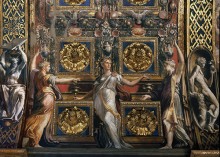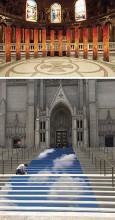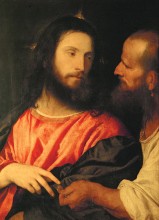The Foolish Virgins by Francesco Mazzola
After stints in Rome and Bologna, the artist Francesco “Parmigianino” Mazzola (1503–1540) returned to his native Parma to paint the vault and apse of Santa Maria della Steccata in 1530–31. Progress on the project was slow, and the commission was eventually given to another artist. Parmigianino did finally manage to paint The Wise Virgins and The Foolish Virgins, based on Jesus’ parable in Matthew 25:1–13. Moses and Adam are painted to look like sculptures, a technique known as grisaille, and flank the central characters.




